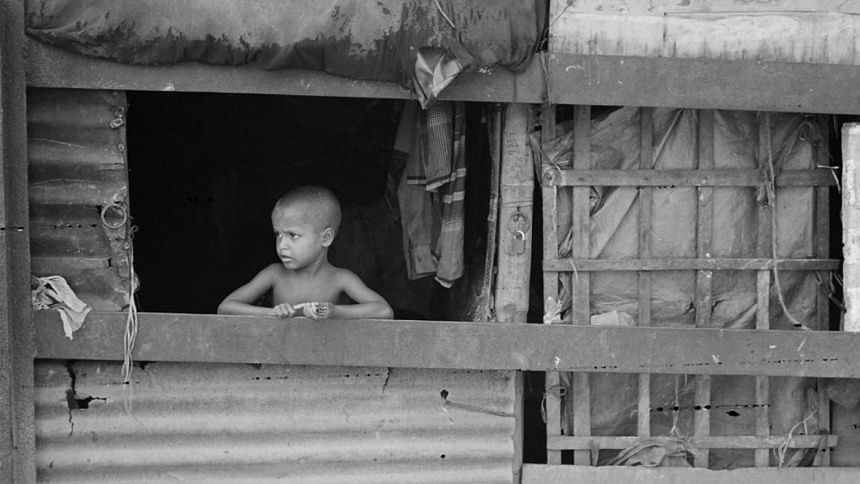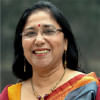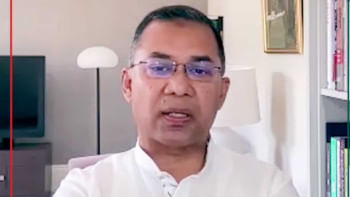Overcoming rising inequality exposed by COVID-19

COVID-19 has wreaked havoc in the lives of millions with devastating economic and social impacts. Although no country or people have been spared from its rampage, it is being experienced differently in terms of gender, class and socioeconomic situations.
In an already unequal world, COVID-19 is exacerbating inequality globally. For centuries the rich-poor divide has been an accepted norm in all societies. Some countries have succeeded in bridging that gap through the "welfare state" systems with strong social protection, high taxation of the wealthy and improved health services. Nonetheless, over the years, global inequality has grown to epic proportions. In 2018, Oxfam revealed in a report that 82 percent of the wealth generated last year went to the richest 1 percent of the global population, while the 3.7 billion people who make up the poorest half of the world saw no increase in their wealth. Again in 2019, Oxfam reported that the world's 2,153 billionaires have more wealth than the 4.6 billion people who make up 60 percent of the planet's population, going on to say that a CEO of one of the four famous global brands makes in four days what a garment worker in Bangladesh makes in her lifetime.
Let that sink in for a moment.
Currently, the prolonged lockdown is resulting in near destruction of the livelihoods of the most vulnerable people. We are witnessing the loss of the progress we had made through years of poverty alleviation. While the crisis is affecting the wealthy too—big businesses, manufacturers, retail shops, etc., are counting huge financial losses all over the world—it is the poor who are at risk of starvation, ill health and continued deprivation, further widening the rich poor divide.
With sustained GDP growth of 7 percent over the last 6 years and prediction of 8.2 percent in the current year, Bangladesh was poised to achieve middle income status in 2030. However, the situation of inequality has remained a major challenge which even the government acknowledges. The latest Household Income and Expenditure Survey released by Bangladesh Bureau of Statistics (BBS) found that the income share of the poorest 5 percent of our population was 0.23 percent of overall income, a sharp fall from 2010 when it was 0.78 percent. In contrast, the richest 5 percent's share of income grew to 27.89 percent, up from 24.61 percent in 2010. This basically means that the bottom 5 percent's share of national income has decreased, whereas the richest 5 percent's has increased.
Bangladesh is performing poorly in reducing the gap between the rich and the poor as it is ranked 148 among 157 countries in this year's "Commitment to Reducing Inequality Index". Citing similar data from the 2016 survey , the government has acknowledged in its SDG progress report that income inequality increased in the past six years with a Gini coefficient value of 0.483 in 2016. While the statistics bureau survey mainly sheds light on growing income inequality, wealth inequality is even worse. According to estimates by the Centre for Policy Dialogue, wealth inequality in terms of Gini coefficient stands at a staggering 0.74. In another report Bangladesh topped the list of countries in 2018 that saw the quickest growth in the number of ultra-wealthy people that rose by 17.3 percent between 2012 and 2017.
Decreasing inequality is a tall order for any society, more so in ours where class divide is deeply entrenched and scope for upward mobility is limited. However, there is ample evidence that inequality is not so much a condition of lack of resources but rather the way it is distributed and who benefits from it. The Oxfam report in fact shocked the world of the vulgarity of the skewed distribution of wealth. In talking recently to development workers across the country the same story emerges, due to lockdown there is widespread hunger and deprivation of marginalised people, persons with disabilities, women headed households, street children, ethnic minorities and the so called untouchable communities. To add to this are reports of increase in gender violence and child marriage as an off shoot of increased poverty. The woman who till recently earned enough to support herself and two children with her pitha making enterprise is left destitute with no source of income, the van puller who earned at least Tk 300 per day has no passengers and boat men see their boats lying idle without goods to ferry. The informal workers who account for 80 percent of the workforce have no option but to depend on government and other relief efforts.
Once the economy begins to move again, given the dynamics of wealth creation, the wealthy have a much better chance of overcoming their losses and return to their previous positions. But it will be extremely hard for the already economically weak to regain lost economic and social capital. There is every chance that they will end up losing not only their income, but human capital as well such as education and health, severely pushing back the gains made over the years of political, social and economic empowerment.
So what can be done to at least minimise risks that rising inequality poses. I say risk because according to social scientists, when Gini coefficient of income inequality is above 0.5, (presently 0.483 BBS) a country remains in the high risk of social unrest. It is to everybody's interest that the economically weak be assisted to stand back on their feet again. Suggestions by experts for cash transfers of Tk 10,000 each to two crore people which is only .80 percent of the GDP (Rizwanul Islam, The Daily Star, May 1) should be considered seriously. Same case has been made by CPD arguing that such cash incentives will generate six times the return on investment.
Finally, what about our own brand of the wealthy 1 percent? Can we count on them to use their power and wealth to do what it takes to revive the economy and assist those in need in this hour of crisis? There are many who are already coming forward with massive donations and relief. However, the need of the hour is much more than relief, it is about assisting in ways that will enable entire communities to rise out of the poverty cycle in a sustainable way. Not only the very wealthy, we all have to make a commitment towards social giving as we have never done before. It has taken many years of effort by government, non-government organisations and the private sector to reduce extreme poverty from 23 percent to the present 15 percent. We cannot let all our collective efforts go to waste.
Together, we have to make a stronger commitment to building a more humane, just and equitable society. For that to happen we need strong political will, bold policy decisions, accountable transparent systems of service delivery and collaboration of all sections of society.
Shaheen Anam is Executive Director, Manusher Jonno Foundation.

 For all latest news, follow The Daily Star's Google News channel.
For all latest news, follow The Daily Star's Google News channel. 



Comments